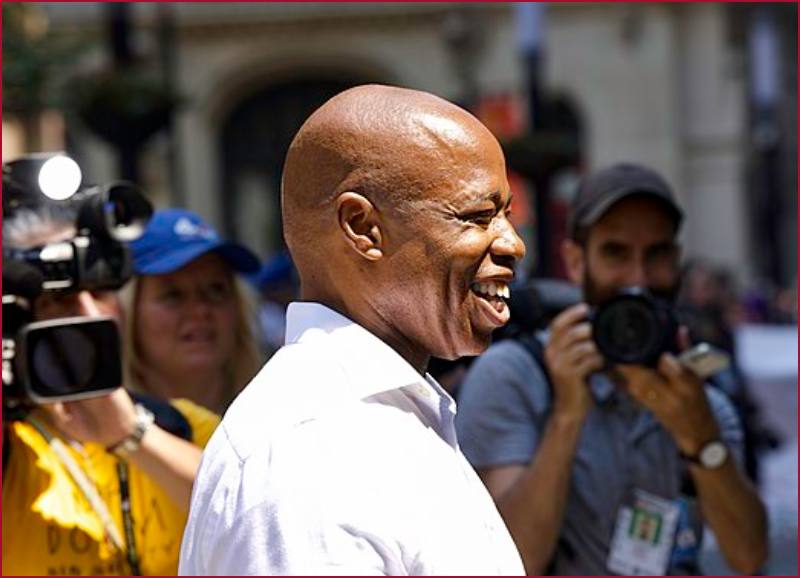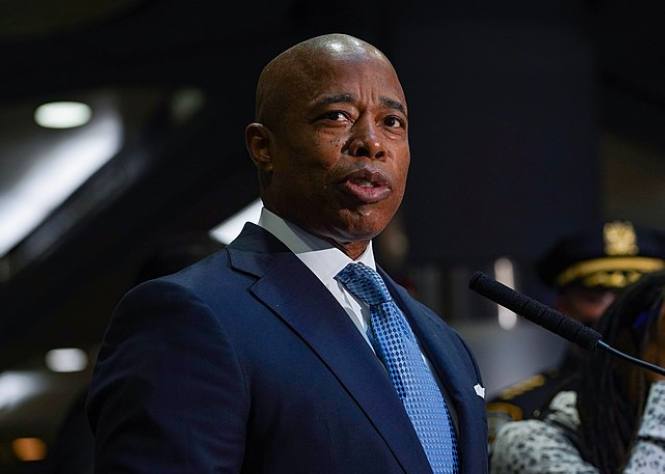New York City Mayor Eric Adams announced Sunday that he is ending his bid for re-election, saying that persistent media speculation and the city’s decision to withhold public campaign funding made it “impossible to continue.”
Adams — who framed the decision as an admission of political reality rather than a retreat from public life — said, “Despite all we’ve achieved, I cannot continue my re-election campaign,” while pledging to remain in public service.
Adams’s withdrawal, announced in a video on X, caps a turbulent year in which his once-promising independent run was repeatedly battered by low poll numbers, fundraising shortfalls and a cascade of scandals that critics say eroded his credibility. The announcement effectively narrows a crowded field and reshapes the legal and political dynamics of a race now centered on Democratic nominee Zohran Mamdani, former Governor Andrew Cuomo (now running as an independent), and Republican Curtis Sliwa.

Key facts (what reporting shows so far)
- Adams announced he was ending his campaign on social media Sunday; he said he will finish his mayoral term but will not continue to seek re-election.
- City and national outlets reported that withholding of public matching funds by the New York City Campaign Finance Board (CFB), ongoing media scrutiny and the lingering political damage from a previously filed federal corruption case all contributed to the campaign’s collapse.
- Adams’s name will likely remain on the November ballot because he suspended his campaign after the statutory deadline to remove names. That technicality means his exit does not instantly simplify the ballot mechanics for voters.
Legal and procedural implications
Campaign finance: withheld matching funds and remedy options
The mayor specifically cited the city’s decision to withhold public campaign funds. When a municipal campaign finance body withholds matching or public funds, it usually does so after identifying irregularities in contribution reporting or donor eligibility. That withholding has immediate operational effects — shrinking cash on hand and making payroll, advertising buys and field operations much harder — and can also stigmatize a campaign in voters’ eyes.
Legally, campaigns have discrete administrative and judicial routes to challenge CFB determinations: they can request a rehearing within the board, provide supplemental documentation, or seek review in state court. A successful administrative challenge could restore some funds, but the delay and publicity often leave a practical hole that is difficult to fill late in a race. Reporting indicates Adams faced just such a funding squeeze and the resulting operational strain.
Criminal-justice shadow: dismissed charges and political aftershocks
Adams’s term and campaign were shadowed by a federal bribery and corruption investigation that, according to several outlets, was ultimately dismissed. That episode raised questions about prosecutorial choices, political deals and the mayor’s relationship with federal actors. Even where criminal charges are dismissed, the public and institutional reactions (press coverage, congressional inquiries, inspector general probes) often persist — creating reputational and legal aftereffects that can hamper fundraising and governance. Reporting suggests those aftershocks materially weakened Adams’s political standing.
Ballot law and post-withdrawal technicalities
Because Adams suspended his campaign after ballot printing deadlines, his name will likely remain on the ballot in November. Under New York election rules, late-stage withdrawals can create confusion for voters and for the campaign finance reporting that follows election day.
Practically speaking, a candidate who is no longer actively campaigning but whose name remains on the ballot can still capture votes, potentially affecting vote splitting and the legal calculus of plurality outcomes. Several outlets note that Adams’s exit does not fully clear the field for Mamdani or Cuomo; strategic calculations by Democratic and centrist voters remain pivotal.
Political fallout and what’s likely next
Short term: consolidation and reaction
Early reactions from rival campaigns and political leaders framed Adams’s exit as both an opportunity and a caution. Some figures urged his supporters to coalesce behind Cuomo to block a progressive nominee; others warned that the race could now break in unpredictable ways. The departure also frees up donors and power brokers who had been hedging bets among multiple independents and Democrats. Reporting shows statewide officials and party leaders watching for rapid shifts in endorsements and fundraising.
Long term: governance and legal accountability
Adams insisted his public service will continue. Legally, however, any lingering investigations, administrative reviews, or litigation tied to the prior probes and campaign financing can follow him into whatever role he takes next. The CFB and federal oversight entities may still conclude inquiries that lead to administrative fines, civil suits, or policy changes — even where criminal charges were not sustained. The mayor’s effort to argue a record of crime reduction and governance accomplishments now competes with a legal and reputational record that opponents will use in the closing months of the campaign.
Analysis: why this matters to legal watchers
- CFB determinations can be decisive. The Adams campaign underscores how administrative decisions by a campaign finance board — which turn on reporting, donor vetting and eligibility — can have campaign-ending consequences long before a court offers review. Legal practitioners should expect more litigation over the timing and transparency of these determinations in future municipal contests.
- Dismissed criminal matters don’t erase political damage. Even when federal charges are dropped, legal and political harms can persist. Prosecutorial choices, plea bargaining and charge dismissals can create lingering narratives that influence both public opinion and administrative treatment (for example, how local agencies view a candidate’s filings). Those dynamics are likely to prompt more preemptive legal strategies in high-profile races.
- Ballot timing creates governance awkwardness. Candidates who suspend late remain legally present on ballots and can complicate electoral law questions about vote allocation, recount standards, and post-election litigation. Campaigns and election lawyers will be watching for litigation or statutory fixes in the next legislative cycle to address late withdrawals.
- Campaigns as legal entities face multi-front pressure. Fundraising shortfalls, administrative sanctions, media scrutiny and parallel investigations create a compound risk that can be fatal to campaigns even before formal adjudication. Effective legal defense strategies must therefore be both proactive and public-facing, coordinating administrative appeals, litigation readiness, and communications law.
What to watch next
- Whether Adams or allied donors pursue an administrative appeal to the CFB or civil litigation to challenge the withholding of public funds.
- Rapid shifts in endorsements and fundraising among Mamdani, Cuomo and Sliwa camps as Adams’s political network reallocates resources.
- Any renewed activity from federal or state oversight bodies that could revisit prior inquiries into the Adams administration.

